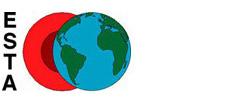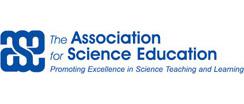The rock cycle
This list provides a range of activities and demonstrations for teaching about Earth science at key stage 3, as well as background information, practical tips, and suggested teaching strategies. The resources can be incorporated into a scheme of work looking at the following aspects of Earth science:
• the composition of the Earth
• the structure of the Earth
• the rock cycle and the formation of igneous, sedimentary and metamorphic rocks
Visit the secondary science webpage to access all lists: www.nationalstemcentre.org.uk/secondaryscience
Whilst this list provides a source of information and ideas for experimental work, it is important to note that recommendations can date very quickly. Do NOT follow suggestions which conflict with current advice from CLEAPSS, SSERC or recent safety guides. eLibrary users are responsible for ensuring that any activity, including practical work, which they carry out is consistent with current regulations related to health and safety and that they carry an appropriate risk assessment. Further information is provided in our Health and Safety guidance.
- ALL
- Teacher guidance
- Video
- External link
Teacher guidance
Rock Formation and Deformation
Although slightly dated in layout, this textbook contains some excellent background information on the rock cycle, weathering and rock deformation. There are a series of good activities and experiments in every chapter that could be taken and repurposed.
How the Earth Works
This textbook is dated however there is a lot of good information covering the rock cycle, weathering and minerals. There are lots of good experiments and activities that could be updated and used.
Earthquakes
In this resource students learn that the Earth’s surface is split into tectonic plates and that earthquakes usually happen at plate boundaries. They will explore how when an earthquake happens it releases vibrations, called seismic waves, and there are different types of seismic waves that move in different ways. Activities include designing and creating an earthquake resistant structure then testing it using a shake table.
The rock cycle
In this resource pupils will examine and compare different kinds of rocks and learn that all rocks are made from a mixture of minerals. They discover the three main types of rock are formed in different ways and look at their properties. They will learn about the impact of weathering and erosion and that no rock stays the same forever, being broken down over thousands and millions of years, moved around and deposited in different places.
Plate tectonics - R2P
This resource provides a lesson plan describing how to use slow motion animation (slowmation) to teach plate tectonics. It gives ideas on how to deliver the task along with the key questions to ask to ensure understanding and suggested software to use for the animation. A research summary discusses how pupils find it difficult to understand the concept of plate tectonics.
Video
Earth Science *suitable for home teaching*
This is a good bundle of resources that contains videos, teacher notes and student worksheets to cover a variety of topics such as the rock cycle, erosion and seismic waves.
External link
Angel cake layers
This is a link to a blog post with suggestions for using different cakes and chocolates to model various aspects of Earth science.





